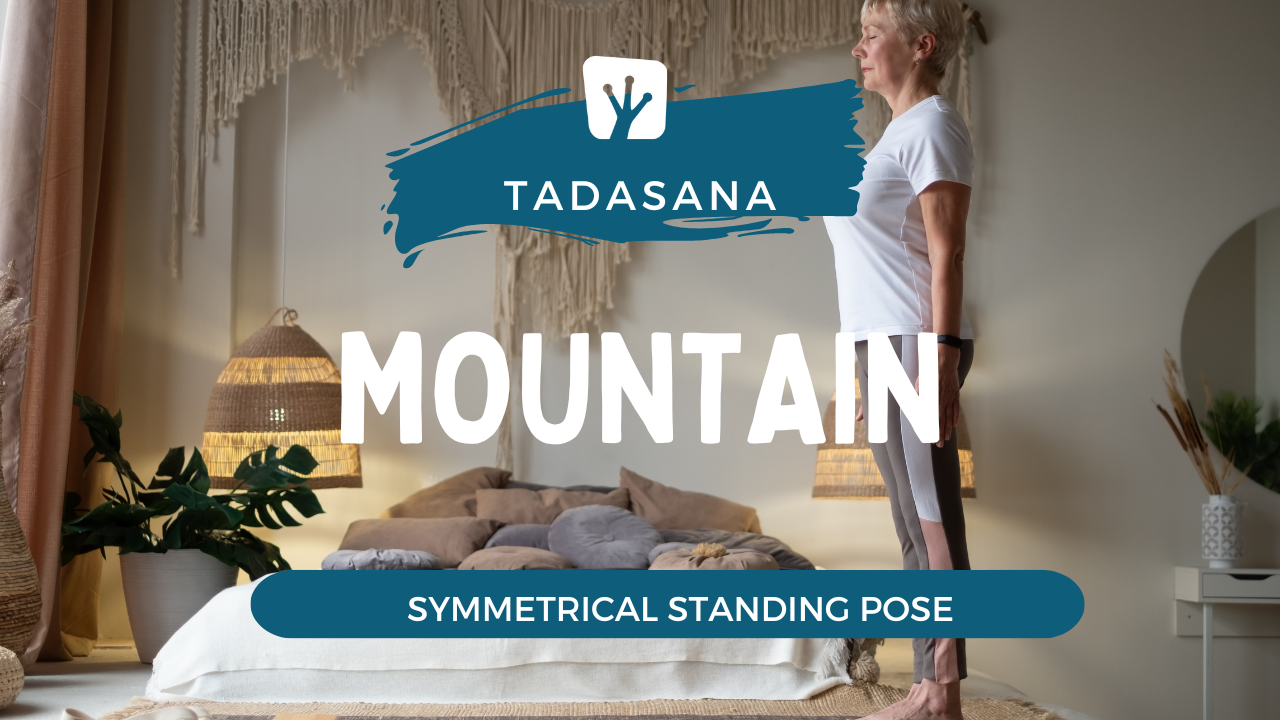Mountain
TADA - MOUNTAIN
ASANA - POSE
Mountain Pose (Tadasana) is the foundation of all standing poses in yoga.
It might look quite straightforward from the outside, but there is a lot to remember if we are to do the pose properly. Creating healthy alignment in Mountain Pose will help your posture in your everyday life, and in turn this will help to reduce posture-related problems in the back, neck and shoulders.
The aim in the pose is to create a line of energy which flows from the crown of the head to your feet. You are trying to create a posture where an imaginary line starts at the outer edge of your ear and travels down through the centre of your shoulder, hips, knees and ankles.
How to get into the pose:
Stand with both feet facing 12 o’clock - either with your big toes touching and the outer edges of your feet lined up with the edges of your mat - or with your feet a little wider if that feels better.
Spread your toes out on the mat. Press through each corner of each foot. Create a solid foundation through your feet.
Activate your quadriceps (thigh muscles) and lift your kneecaps. The femurs (big bones in your top legs) should rotate inward.
Your spine and pelvis should be neutral. This means working with the natural curves of your spine. Try not to stick the tailbone out, nor tuck it under. Let your pelvis be neutral and imagine that you are lengthening your tailbone down.
Draw your abdominal muscles in and up (engage uddiyana bandha).
Draw your shoulder blades in towards your spine and then down, away from the ears.
Lift gently across your chest but watch that you don’t let your ribs fly out.
Keep your chin level with the floor.
I mostly teach lightly turned out palms in anticipation of reaching up to Extended Mountain pose. However, you will also find the pose taught with palms turned in.
Remember to always create balance between effort and ease in your pose.
You are not standing in a military parade!
How long to stay in the pose:
Five to ten breaths (but note the cautions below)
Gaze (Drishti)
A point in the distance at eye level
Tip of the nose
Challenge Yourself:
Closing your eyes will challenge your balance. Notice the sensations of how the pose changes.
Modifications you can take to make the pose more accessible:
If feet together does not feel like a stable foundation in your body, widen your feet to create a solid pose. Think mountain!
Contraindications / cautions:
Be careful of holding the pose for an extended period of time if you have low blood pressure. You might feel lightheaded.
Practice with caution if you have a headache or migraine

